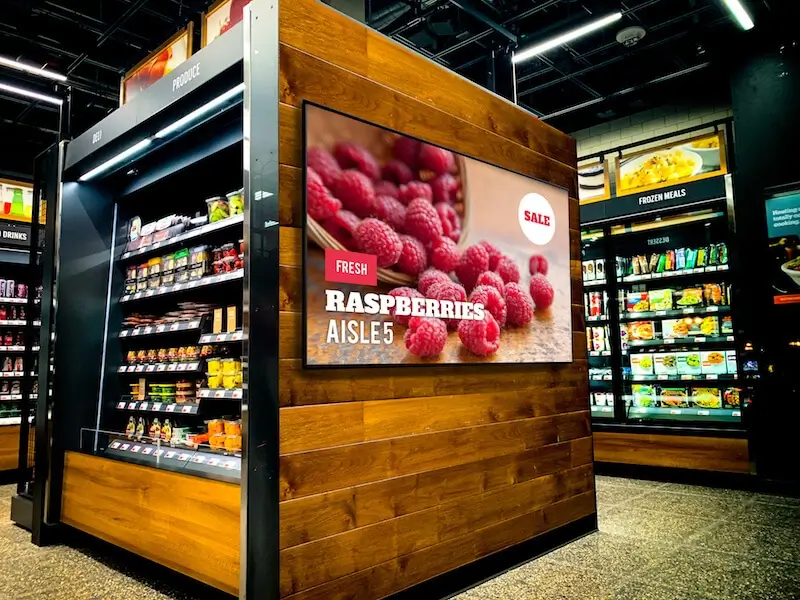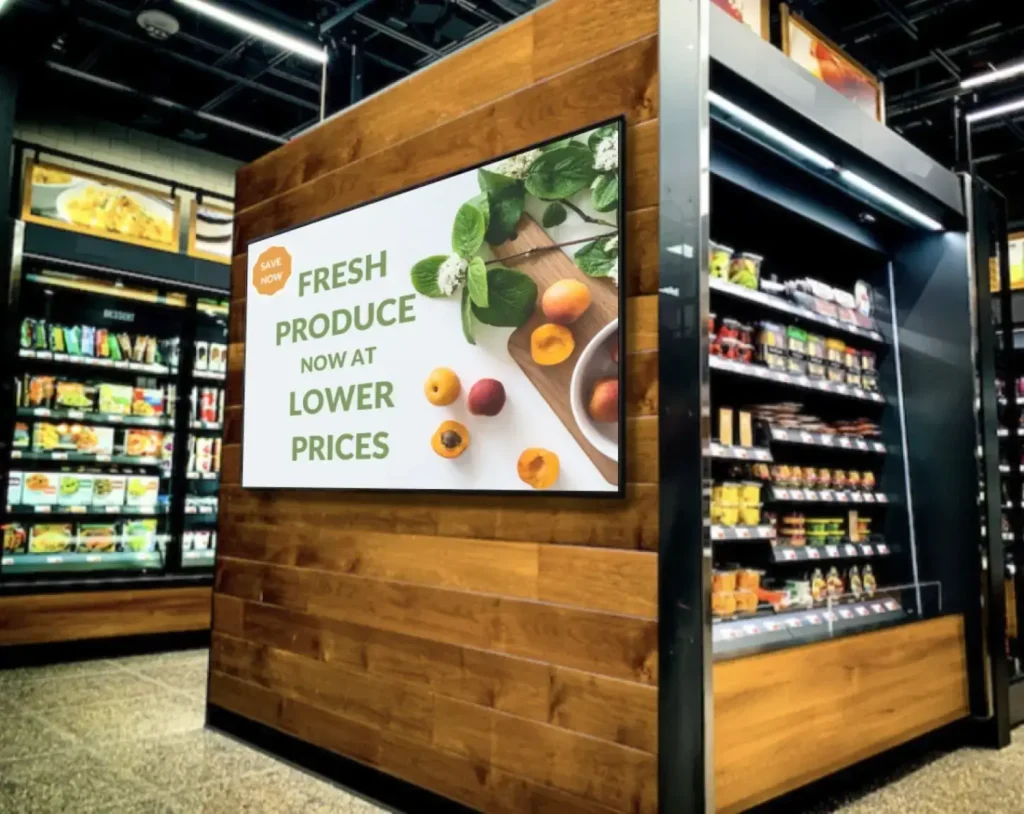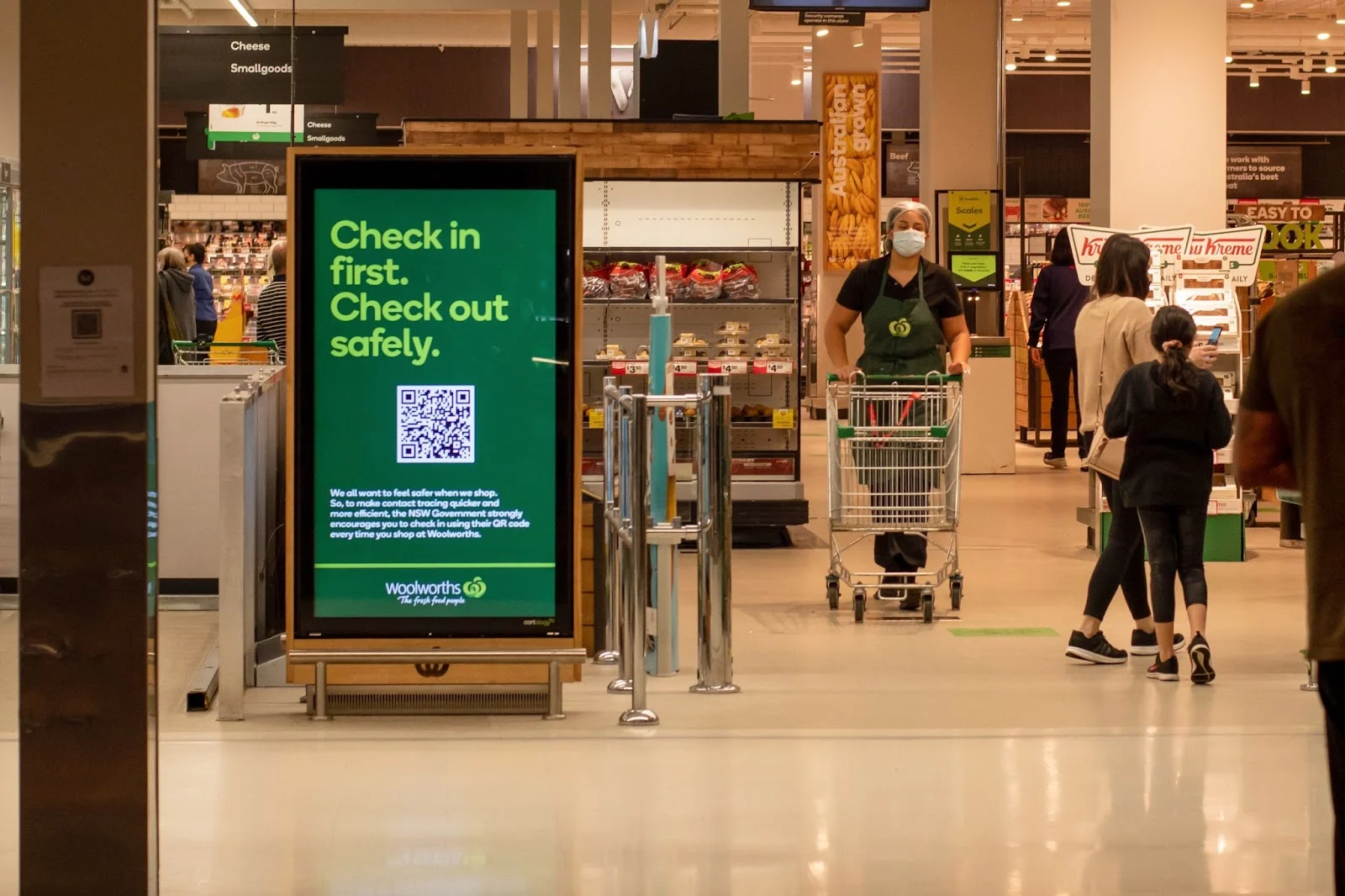Customers observe movement, color, and sharpness. That is why retail store digital signage has become the new storefront storyteller- transforming aisles into experiential data-driven touch points that inform decision-making and increase basket size. Whether you’re testing digital signage for a store at one checkout or rolling out digital signage for retail stores across a national footprint, the objective is the same: on time, relevant content that is seamless to manage.
What Exactly is Retail Store Digital Signage?

Digital signage in retail stores is the application of LED/LCD/projection screens as a strategic tool to inform, engage, and influence the customer in real time. Imagine dynamic menus, promo loops, wayfinding, and product education all under the control of a single dashboard.
Definition (What It Is)
Digital screens that offer focused messaging, pricing, promos, and directions driven by a software platform that schedules, updates, and keeps track of the devices.
Static to Dynamic (Why It Evolved)
Printed posters are not able to keep up with the changes and campaigns of the prices. Digital makes fast, repeatable, and moving graphics, which are demanded by today’s shoppers.
The Psychology (Why it Works)
People are attracted to motion and opposition. Motion and high saturation raise attention and memory and assist digital signage in retail stores to nudge decisions at the point of choice.
Core Benefits That Matter on the Floor
A well-planned retail store digital signage rollout—grounded in how shoppers actually move and decide—makes digital signage in retail stores feel helpful, not noisy.
Enhanced Customer Experience
Minimize perceived wait time, ease navigation, and discovery should be enjoyable using beautiful imagery and straightforward micro-copy at the shelf.
Live Content Updates
Adjust prices, bundles, and announcements within seconds– respond to inventory changes and local events without reprints or delays.
Brand Recall Increased
Clear screens and uniform templates will fuel recall; customers will recall your message long after they have left.
Types of In-Store Digital Signage (What to Deploy Where)
Tailor the format to the job. They are retail signage concepts that work across the board.
Video Walls
Movie-style storytelling of launches and flagship moments; perfect in entry and feature areas.
Interactive Touchscreens
Allow shoppers to browse catalogs, look at availability, or design their own products- capture intent and educate.
Shelf-Edge Displays
Thin slips at the decision stage magnify price, reviews, and promos in the place that matters most.
Wayfinding Kiosks
On a bigger scale, direct the flow to categories, services, or pickup points, with less friction and less staff burden.
Strategic Placement for Maximum Impact

Entrances create first impressions, aisles and promotional gondolas keep the attention, and checkouts close the deal with last-minute offers. Ensure that glare is avoided using line-of-sight studies, and the density of content in fast-moving paths is low.
Content Strategy That Sells (Keep It Fresh & Useful)
Good content sells. This is how to operate digital signage for retail stores that will remain relevant.
Storytelling Through Motion Graphics
Clean hierarchy (headline -> benefit -> action), short loops. Use pair hero images and one message that you cannot miss.
Data-Driven Personalized Promotions
Triggered by time of day, weather, or inventory. Localization causes a national template to feel neighborhood centric.
Seasonal and Event-Based Campaigns
Scheduling around holidays, product releases, and community events. Adjustments of pre-load to allow stores to change without new creative requests.
The Tech Backbone You’ll Rely On
The reliability and scale are decided by hardware and software selection- the best digital signage in stores is the one that is easy to control and that delivers performance.
Display Hardware Innovations
Ultra-thin bezels, high-bright windows, flexible OLED, and power-efficient panels save power and maintenance and enhance readability.
Digital signage software features
Remote scheduling, player health, proof-of-play, and user role cloud dashboards; AI-based rules to automate offers and dayparting.
Integration with Retail Analytics
Associate screen playbacks with POS, traffic counters, and loyalty. Find out what messages work to boost add-ons and iterate. In the long run, your network will turn into a calculable growth channel, not a cost center.
Implementation Challenges to Plan For
Opportunities to make a difference can be undermined by high initial hardware investment, content exhaustion due to excessive loops, and network glitches. Cushion by having a transparent content calendar, device monitoring, and feedback loops within stores.
Accessibility, Compliance & Ethics
The readability design (contrast, font size, dwell time), caption motion, and pricing/offer regulations. Personalize, but in a transparent manner and stay within the privacy norms boundaries.
Who’s Doing It Well?
Whether it is global apparel giants, tech and grocery leaders, brands that standardize templates, empower local swaps, and test tirelessly experience ongoing increases in promoted SKUs, better brand ambience, and effortless customer journeys.
What’s Next for Retail Store Digital Signage
Future-proof your roadmap; these changes have already begun.
AI-Powered Content Automation
Systems vary layouts and offer based on crowd patterns, inventory, and weather, no manual juggling required.
AR & VR Moments
Try-ons, product visualizers, and immersive demos allow you to experience the item without opening a box.
Hyper-Personalized Shopping
Context signals (context signals, opted-in loyalty) recognition-free tactics bring relevant bundles and accessories to the surface in real time.
Turn Aisles into Attention Engines

Tell us how many stores you have, where you have the screens, and what you are trying to achieve with the campaign. We will chart a pilot that scales: templates of entrances, power aisles, checkout; rules of dayparting; and guidelines that keep all the loops on-brand. Whether you’re testing digital signage for a store in a store or standardizing regionally, we can help you roll out retail store digital signage that feels current–and works.
FAQs on Retail Store Digital Signage
Q1. How cost-effective is retail digital signage?
Although screens and mounts are an investment, savings are long-term because of the removal of print cycles and the increased promo agility. Improved margin mix and increased uplift on featured SKUs are observed by many retailers.
Q2. Can small retailers use digital signage effectively?
Absolutely. Begin at the entry or checkout with a single display. Even smaller retail signage ideas, such as menu rotations or local offers, can be seen to make a difference.
Q3. Is special training required to operate digital signage systems?
The contemporary platforms feature drag-and-drop editors and automatic scheduling, which allows the associates to update safely within the templates approved by the brand.
Q4. How does digital signage affect in-store sales?
Lifts on promoted items are often double-digit (context matters). Testing and analytics identify what messages cause the needle to move in your format.
Q5. What industries benefit most from retail store digital signage?
Clearer promos, faster guidance, and richer discovery via digital signage in retail stores benefit fashion, electronics, grocery, beauty, and convenience.





